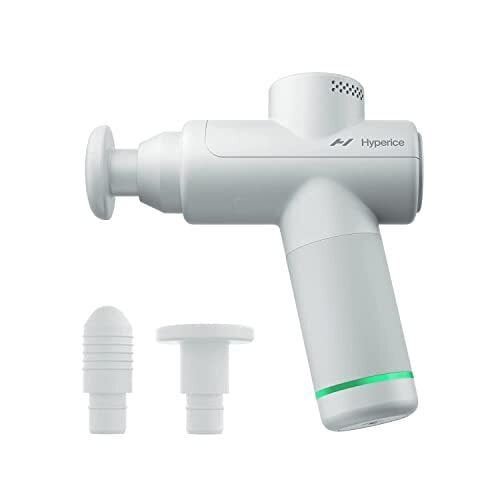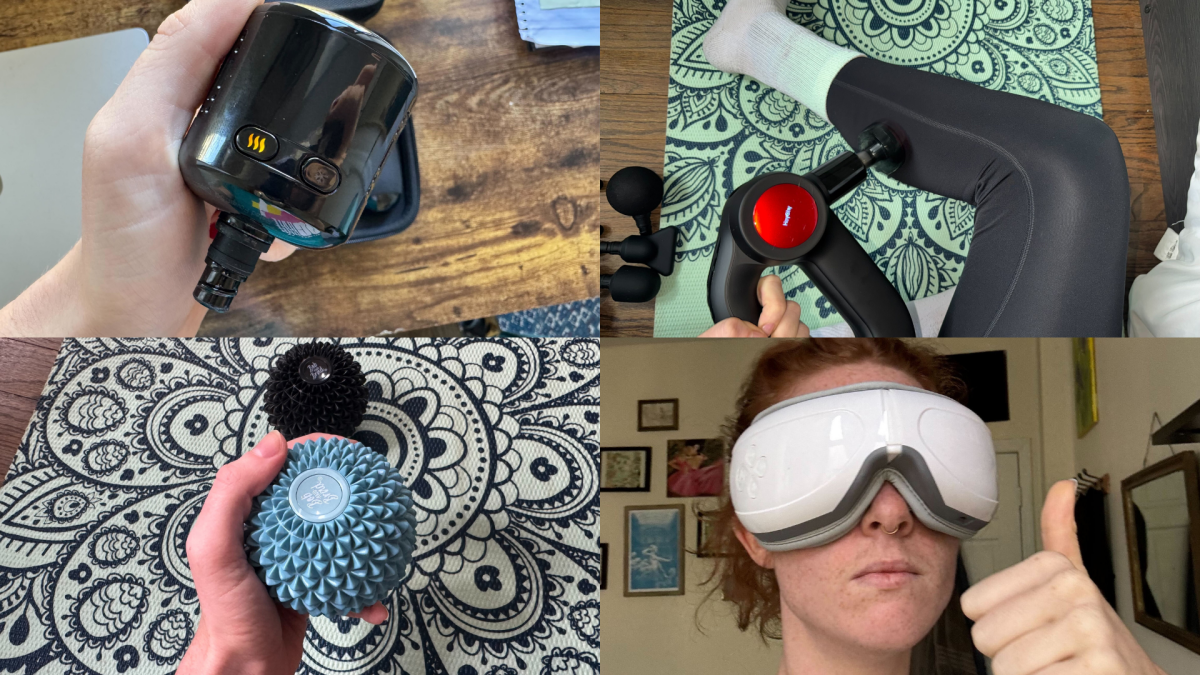We may earn a commission from links on this page.
I think my greatest skill as a marathon runner is my focus on proper recovery. I care less about setting a new record this year, and more about staying healthy and strong enough to run another marathon the next year. For me, that massage gun session is just as important as getting in a long run.
The recovery tool market is flooded with overpriced gadgets that promise miraculous results, but the truth is simpler: The best tools are often the most basic ones that do their job consistently without breaking the bank.
After trying out dozens of different products over the years, here’s what I’ve found actually matters when shopping for massage guns and recovery tools, plus the red flags that signal you should keep scrolling.
How to find the perfect massage gun
I don’t know where I’d be without my arsenal of massage guns. Here are the key features to look out for when you’re shopping around:
Battery life that actually lasts
Ignore the “six-hour runtime” claims—those are measured at the lowest setting with no load. A quality massage gun should give you at least 90 minutes of real-world use (meaning medium pressure, medium speed) before dying. Anything less, and you’ll find yourself constantly hunting for the charger. When in doubt, stick to the trusted name brands, like Therabody, Ekrin, and Hyperice.
Strong numbers behind pressure and speed
I’ve found the best massage guns have at least five to six speed levels, with the lowest setting being genuinely gentle. But how do you evaluate those speed levels? Two numbers you’ll see are amplitude and percussions per minute (ppm). Amplitude measures how deeply the device penetrates your muscle tissue, while ppm determines the speed of impact.
Most competitive massage guns boast over 3,000 ppm, but amplitude can easily make up for lower ppm. The (rightfully) popular Theragun Prime, while limited to 2,400 ppm, compensates with an impressive 16mm amplitude that creates significantly deeper muscle penetration.
Reasonable noise levels
If your massage gun sounds like a leaf blower, it’s poorly designed. Quality models should be quiet enough to use while watching TV without needing subtitles. My Hyperice Hypervolt Go 2 always impressed me on this front. The quietest models hover around 35-45 decibels.


Attachments that serve different purposes
Use your attachments properly, and it’s like having four massage guns in one. You need a round ball (general use), a flat head (large muscle groups), and a bullet/cone tip (trigger points). While versatility is nice, you probably don’t need massage guns that come with 15 different attachments—it could be a sign they’re compensating for poor basic performance.
When I have the option for the heat therapy head, like with the Bob and Brad Q2 mini (which I reviewed), I’m hard-pressed to swap it out for one of the ball, bullet, or fork heads instead.
What to avoid in massage guns
When you’re shopping for budget options, make sure to look out for these red flags:
Anything claiming to “break up scar tissue” or provide “deep tissue massage like a professional.” These are medical claims that no consumer device should make. Massage guns provide percussion therapy that can help with muscle tension and blood flow, but they’re not medical devices.
Ultra-cheap options under $50. Learn from my mistakes, please. The motors in these budget models typically fail within months, and they often lack the power to provide effective treatment. Save your money for something that will last.
Guns with amplitude (how far the head moves) under 10mm. This spec is often buried in the fine print, but it’s crucial. Lower amplitude means less effective muscle penetration.
While it’s tempting to use the massage gun daily, giving muscles time to recover between sessions is important. Use it as part of your warm-up routine before exercise or for recovery afterward, but avoid daily intensive treatment of the same areas. On days where I skip my massage gun, I opt for simpler tools: foam rollers and massage balls.
What do you think so far?
What to look for in a foam roller
Follow a few basic guidelines to make sure you don’t waste your money:
Medium-firm density. Extra-firm rollers sound hardcore, but they’re often too intense for regular use and can cause bruising. Soft rollers don’t provide enough pressure to be effective. Look for descriptions like “medium-firm” or “moderate density.”
13-inch length minimum. Shorter rollers limit your exercise options and make it harder to maintain proper form. The extra length is worth the storage space.
Hollow-core construction. Solid foam rollers are heavier, more expensive, and don’t perform better than hollow versions. A hollow core also means you can travel with other items stored inside.
What to avoid in a foam roller
Here are some trendy features you can skip:
Vibrating foam rollers. The vibration feature adds cost and complexity without proven benefits over standard rolling. The motors also tend to fail, leaving you with an expensive regular roller. Trust me, they’re not worth the buzz.
Overly aggressive textured or “trigger point” surfaces. Those spiky designs might look therapeutic, but they’re often too intense for daily use. A smooth or lightly textured surface works better for most people.
Rollers under $15. As with massage guns, ultra-cheap foam rollers are a waste of money. They compress and lose shape quickly, becoming ineffective and potentially uncomfortable.
What to look for in a massage ball
You can pretty much always use a lacrosse ball over a speciality massage ball. Still, if you’re gonna spend $15, here’s what to look for:
Lacrosse ball density. Whether you buy an actual lacrosse ball or a purpose-made massage ball, it should have similar firmness. This is the sweet spot for trigger point release without being destructively hard.
Two-ball options for spine work. Peanut-shaped double balls (or two balls in a sock) are excellent for working along the spine and in areas where a single ball creates too much pressure.
Multiple sizes. Having both tennis ball and lacrosse ball sizes gives you options for different body parts and pressure preferences.
What to avoid in a massage ball
Again, don’t waste your money here:
Super-hard balls marketed as “professional grade.” Harder isn’t always better, and extremely firm balls can cause bruising or nerve irritation.
Expensive branded balls. A $5 lacrosse ball from a sporting goods store performs identically to a $25 “recovery ball” with fancy packaging.
The bottom line
After trying out everything from $30 knockoffs to $600 “professional” models, I’ve learned that the most effective recovery routine uses simple, well-made tools consistently rather than the latest gadgets sporadically. As much as I enjoy the Bob and Brad brand for their massage guns, I find gadgets like this eye massager too silly to warrant a full-length review.
My current daily setup? A $139 mid-range massage gun, a basic 13-inch foam roller, and a couple of lacrosse balls. Total investment: under $200. This combination handles my recovery needs and has lasted over a year of regular use without issues.
The recovery tool market wants you to believe that more expensive means more effective, but that’s rarely true. Focus on build quality, practical features, and tools you’ll actually use regularly. Your muscles will thank you, and so will your wallet.

